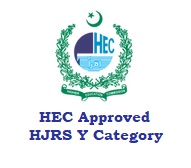Ethnopharmacological evaluation of medicinal plants used to treat diabetes mellitus in Maidan valley, Dir Lower, Pakistan
DOI:
https://doi.org/10.47264/idea.nasij/3.1.4Keywords:
Poaceae, Ziziphus, Sarcococca, ethnopharmacology, morphology, botanical formulation, antidiabetic formulation, herbal formulation, human ailmentsAbstract
This ethnopharmacological investigation aims to collect, identify, and document distinguishable medicinal plant species and remedies used by the local people for the management of diabetes in the Maidan valley in the district Dir Lower, Khyber Pakhtunkhwa, Pakistan. The local people of the valley have relied on botanical antidiabetic herbal formulations. The ethnobotanical interviews, questionnaires, inquiries, and group discussions were conducted from March 2019–January 2022 to obtain traditional knowledge from the local people. Quantitatively, ethnopharmacological data were analysed using indices, Relative Frequency of Citation (RFC) and Use Value (UV). The study identified 42 plant species belonging to 36 genera and 27 botanical families. Most of the species belong to Poaceae, while leaves were the most frequent morphological parts used. In this study, powder was the primary mode of herbal formulation. The highest RFC value was 0.47 obtained for Ziziphus nummularia (Burm.f.) Wight and Arn, and the highest UV was 0.97 for Sarcococca saligna Mull Arg. Local communities of the area use a large number of plant species for diabetes shows the importance of herbal formulation in the basic human ailments of this remote area. In future studies, we hope these medicinal plants will be further phytochemically screened for new antidiabetic properties.
References
Ahmad, L., Semotiuk, A., Zafar, M., Ahmad, M., Sultana, S., Liu Q. R., Zada, M. P., … & Yaseen, G. (2015) Ethnopharmacological documentation of medicinal plants used for hypertension among the local communities of DIR Lower, Pakistan. Journal of Ethnopharmacology, 175, 138-146. https://doi.org/10.1016/j.jep.2015.09.014
Bandaranayke, W. M. (2006). Quality control, screening, toxicity and regulation of herbal drugs. In I. Ahmad, F. Aqil, & M. Owais (eds.), Modern phytomedicine: turning medicinal plants into drugs (pp. 25-57). Wiley. https://doi.org/10.1002/9783527609987.ch2
Bodeker, G., & Ong C. K. (2005). World Health Organization global atlas of traditional complementary and alternative medicine. WHO Centre for Health Development, Kobe, Japan. https://apps.who.int/iris/handle/10665/43108
Bolen, S., Feldman, L., Vassy, J., Wilson, L., Yeh, H. C., Marinopoulos, S., Wiley, C., … Brancati, F. L. (2007). Systematic review: Comparative effectiveness and safety of oral medications for type 2 diabetes mellitus. Annals of Internal Medicine, 147(6), 386-99. https://doi.org/10.7326/0003-4819-147-6-200709180-00178
Fabricant, D. S., & Farnsworth, N. R. (2001). The value of plants used in traditional medicine for drug discovery. Environmental Health Perspectives, 109(1), 69–75. https://doi.org/10.1289/ehp.01109s169
Ferner, R. E, & Aronson, J. K. (2006). Clarification of terminology in medication errors. Drug Safety, 29(11), 1011-1022. https://doi.org/10.2165/00002018-200629110-00001
Gairola, S., Sharma, J., Gaur, R. D., Siddiqi, T. O., & Painuli, R. M. (2013). Plants used for treatment of dysentery and diarrhoea by the Bhoxa community of district Dehradun, Uttarakhand, India. Journal of Ethnopharmacol, 150(3), 989–1006. https://doi.org/10.1016/j.jep.2013.10.007
Ghimire, S. K., Gimenez, O., Pradel, R., McKey, D., & Aumeeruddy?Thomas, Y. (2008). Demographic variation and population viability in a threatened Himalayan medicinal and aromatic herb Nardostachys grandiflora: Matrix modelling of harvesting effects in two contrasting habitats. Journal of Applied Ecology, 45(1), 41-51. https://doi.org/10.1111/j.1365-2664.2007.01375.x
Giday, M., Asfaw, Z., Elmqvist, T., & Woldu, Z. (2003). An ethnobotanical study of medicinal plants used by the Zay people in Ethiopia. Journal of Ethnopharmacology, 85(1), 43-52. https://doi.org/10.1016/S0378-8741(02)00359-8
Irfan, M., Ali, I., & Kashif, R. A. (2018). Ethnobotanical survey of the flora of Maidan Valley, Lower Dir District, Khyber Pakhtunkhwa Province, Pakistan. Plant Science Today, 5(2), 68-71. https://doi.org/10.14719/pst.2018.5.2.379
International Diabetes Federation (2019). Facts and figures, IDF Diabetes Atlas, Brussels, Belgium, 9th Edition. https://diabetesatlas.org/atlas/eighth-edition/?gclid=CjwKCAiAlp2fBhBPEiwA2Q10D0jmsFd32ttpl15VUEyqdNC9Mu6hcWR6VvS43QXdAwnFG3x9gN84cxoC_acQAvD_BwE
Islam, M. K., Saha, S., Mahmud, I., Mohamad, K., Awang, K., Uddin, S. J, & Shilpi, J. A. (2014). An ethnobotanical study of medicinal plants used by tribal and native people of Madhupur forest area, Bangladesh. Journal of Ethnopharmacology, 151(2), 921-930. https://doi.org/10.1016/j.jep.2013.11.056
Jeyaprakash, K., Lego, Y. J, Payum, T., Rathinavel, S., & Jayakumar K. (2017). Diversity of medicinal plants used by Adi community in and around area of D’Ering wildlife sanctuary, Arunachal Pradesh, India. World Scientific News, (65), 135-59. http://www.worldscientificnews.com/wp-content/uploads/2016/11/WSN-65-2017-135-159-1.pdf
Kayani, S., Ahmad, M., Zafar, M., Sultana, S., Khan M. P., Ashraf, M. A, Hussain, J., Yaseen, G. (2014). Ethnobotanical uses of medicinal plants for respiratory disorders among the inhabitants of Gallies–Abbottabad, Northern Pakistan. Journal of Ethnopharmacology, 156, 47-60. https://doi.org/10.1016/j.jep.2014.08.005
Khan, M. T., Ahmad, L., & Rashid W. (2018). Ethnobotanical documentation of traditional knowledge about medicinal plants used by indigenous people in Talash valley of Dir lower. Northern Pakistan. Journal of Intercult Ethnopharmacol, 7(1), 8-24. https://www.ejmanager.com/mnstemps/55/55-1499260482.pdf?t=1676132688
Khatib, O. (2004). Noncommunicable diseases: risk factors and regional strategies for prevention and care. EMHJ-Eastern Mediterranean Health Journal, 10(6), 778-788, 2004. https://apps.who.int/iris/handle/10665/119479
Mahmood, A., Mahmood, A., Shaheen, H., Qureshi, R. A., Sangi, Y., & Gilani, S. A. (2011). Ethno medicinal survey of plants from district Bhimber Azad Jammu and Kashmir, Pakistan. Journal of Medicinal Plants Research, 5(11), 2348-2360. https://academicjournals.org/journal/JMPR/article-full-text-pdf/2B5151122276.pdf
Modak, M., Dixit, P., Londhe, J., Ghaskadbi, S., & Devasagayam, T. P. A. (2007). Indian herbs and herbal drugs used for the treatment of diabetes. Journal of Clinical Biochemistry and Nutrition, 40(3), 163-173. https://doi.org/10.3164/jcbn.40.163
Moradi, B., Abbaszadeh, S., Shahsavari, S., Alizadeh, M., & Beyranvand, F. (2018). The most useful medicinal herbs to treat diabetes. Biomedical Research and Therapy, 5(8), 2538-2551. http://www.bmrat.org/index.php/BMRAT/article/view/463
Olokoba, A. B., Obateru, O. A., & Olokoba, L. B. (2012). Type 2 diabetes mellitus: a review of current trends. Oman Medical Journal, 27(4), 269-273. https://doi.org/10.5001%2Fomj.2012.68
Punthakee, Z., Goldenberg, R., & Katz P. (2018). Definition, classification and diagnosis of diabetes, prediabetes and metabolic syndrome. Canadian Journal of Diabetes, 42, S10-S15. https://doi.org/10.1016/j.jcjd.2017.10.003
Rao, M. U., Sreenivasulu, M., Chengaiah, B., Reddy, K. J., & Chetty, C. M. (2010). Herbal medicines for diabetes mellitus: a review. International Journal PharmTech Research, 2(3), 1883-1892. https://sphinxsai.com/july-sept_2010_vol2.3/pharmtech/pharmtechvol2.3july-sept210/PT=36%20(1883-1892).pdf
Salleh, N. H., Zulkipli, I. N., Yasin H. M., Ja’afar, F., Ahmad, N., Ahmad W. A. N. W, Ahmad, S. R. (2021). Systematic review of medicinal plants used for treatment of diabetes in human clinical trials: An ASEAN perspective. Evidence-Based Complementary and Alternative Medicine, 2021, 5570939. https://doi.org/10.1155/2021/5570939
Sicree, R., Shaw, J., Zimmet, P. (2006). Prevalence and projections. Diabetes Atlas, 3, 16-104. https://www.scirp.org/(S(351jmbntvnsjt1aadkposzje))/reference/ReferencesPapers.aspx?ReferenceID=1100877
Simpson, J (Ed.). (2009). Oxford English Dictionary on CD-ROM: including 7000 new words and meanings. Oxford University.
Tardío J, Pardo-De-Santayana, M., Morales, R. J. (2006). Ethnobotanical review of wild edible plants in Spain. Botanical Journal of the Linnean Society, 152(1), 27–71. https://doi.org/10.1111/j.1095-8339.2006.00549.x
Tzeng, T. F., Hong, T. Y., Tzeng, Y. C., Liou, S. S., & Liu, I. M. (2015). Consumption of polyphenol-rich Zingiber Zerumbet rhizome extracts protects against the breakdown of the blood-retinal barrier and retinal inflammation induced by diabetes. Nutrients, 7(9), 7821-7841. https://doi.org/10.3390/nu7095369
Unwin, N, Whiting, D., Guariguata, L., Ghyoot, G., Gan, D. (2011). IDF diabetes atlas (5th edition). International Diabetes Federation, Brussels, Belgium.
Vitalini, S., Iriti, M., Puricelli, C., Ciuchi, D., Segale, A., & Fico, G. (2013). Traditional knowledge on medicinal and food plants used in Val San Giacomo (Sondrio, Italy)—An alpine ethnobotanical study. Journal of Ethnopharmacology, 145(2), 517-529. https://doi.org/10.1016/j.jep.2012.11.024
World Health Organization. (2015). Implementing the end TB strategy: The essentials. https://apps.who.int/iris/bitstream/handle/10665/206499/9789241509930_eng.pdf
Downloads
Published
Issue
Section
License
Copyright (c) 2022 Muhammad Ali, Muhammad Wahab, Latif Ahmad, Imran Ahmad, Andrew J. Semotiuk, Hammad Ahmad Jan

This work is licensed under a Creative Commons Attribution-NonCommercial 4.0 International License.
Please click here for details about the Licensing and Copyright policies of NASIJ.








